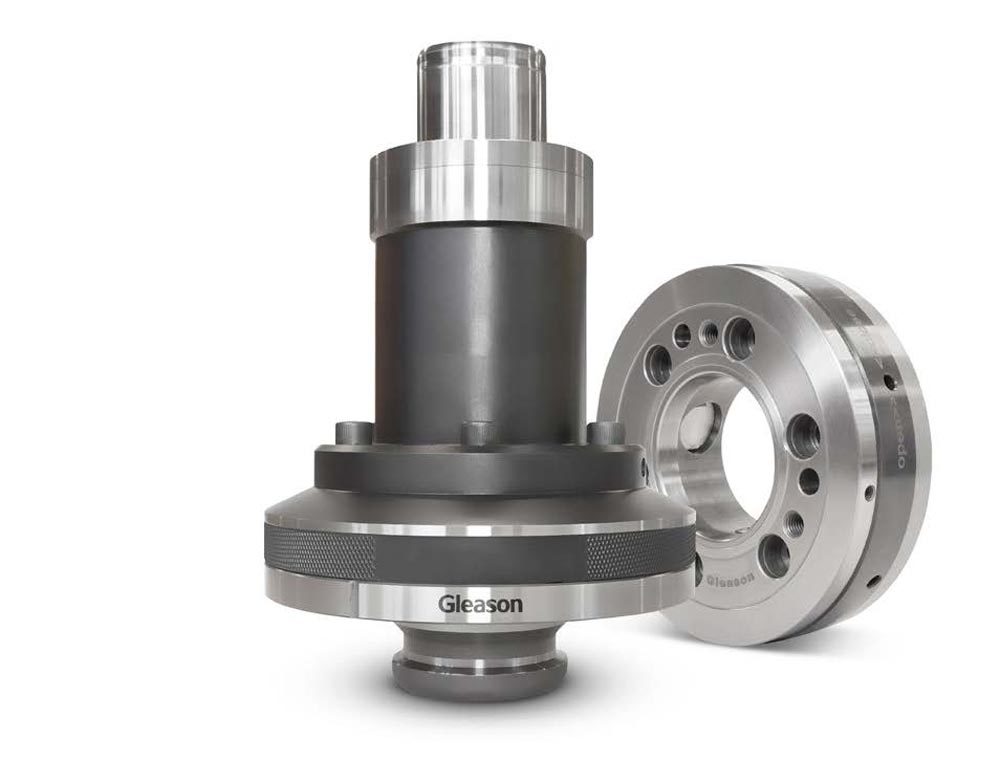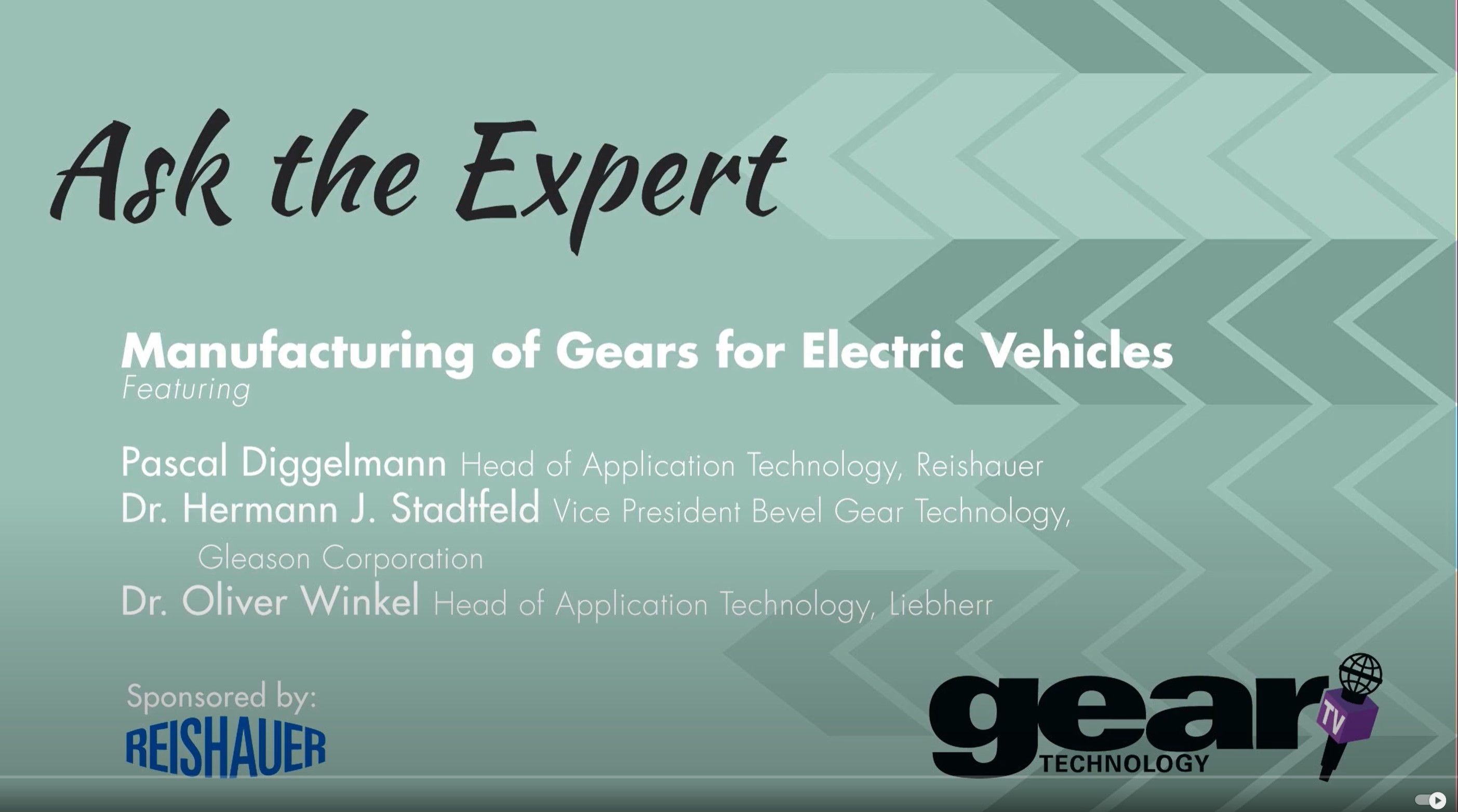Hydraulic Workholding Expands Its Horizons
Extremely accurate and impervious to contamination, hydraulic clamping is ideal for e-drive and other applications where producing high-precision gears is paramount.
In a world where hard finishing operations are now commonplace and high precision is the rule rather than the exception, many gear manufacturers are taking a closer look at workholding. Manufacturers have come to realize that workholding, long under-appreciated and over-looked, can play an important role in squeezing precious seconds out of idle time, help reduce costly runout on precision gear teeth to just a few microns, and cut the high cost of maintenance and repair.

New manufacturing cell, dedicated to hydraulic workholding, gives Gleason total product quality control throughout the entire value stream. This includes the final hard finish grinding before the workholding is assembled, tested, and inspected.
A Bright Future for “Fluids”
But not all workholding is created equal—and your tried-and-true mechanical device may, or may not, be the perfect fit. A new generation of hydraulically actuated workholding solutions can outperform their traditional mechanical counterparts in many of the high precision gear production applications that are increasingly common today—like hard finish grinding, honing, power skiving, and even downstream in the other non-gear machining operations.
The latest improvements in design and manufacturing have resulted in a new generation of hydraulic production expanding arbors available for, but not limited to, the 12 mm to 100 mm diameter size range common to today’s e-drive transmission gears. These arbors deliver an extremely precise and repeatable clamping force when hydraulic fluid pressure is applied to a thin-walled, precision-machined expansion sleeve. The sleeve expands as required by the application uniformly across the entire chucking length of bore ID or shaft OD, ultimately guaranteeing a runout below 3 µm TIR or better, as compared to the 5 µm (or below) runout that can be expected from its mechanical equivalent. The hydraulic arbor expands into the bore to clamp, leaving zero clearance, whereas a mechanical system requires a small clearance, thus compromising accuracy. Mechanical systems also require an axial clamping element; the hydraulic system’s inherently high bore clamping forces eliminate this need. Note that the automatic chucking system is designed with a pressure balance feature to prevent over-expansion. It can also be expanded without a workpiece with no risk of damage, since its maximum expansion range can’t be exceeded. This makes hydraulic clamping much more consistent and repeatable part to part and helps reduce workpiece non-conformities to the “near-perfect” levels that are quickly becoming the norm—not only e-drive gears, but in countless other applications where quiet, long-running gear precision is now so critical. Hydraulic systems can be a particularly good, highly economical alternative for clamping parts with very small-bore diameters too, since they eliminate the challenges of producing small, high-precision collets of various diameters required for mechanical systems.
Additionally, hydraulic workholding, with its completely enclosed system, seems almost tailor-made for the hard finishing operations that are increasingly in use to raise the workpiece quality bar, whether fine finish grinding or honing of e-drive gears, or hard power skiving of larger parts. The swarf produced as a by-product of these operations, particularly when producing smaller parts dry and in higher volumes (and larger internal gears as well where chip evacuation can be difficult) can play havoc with mechanical workholding and cause frequent and costly downtime for maintenance, cleaning, and lubrication. Hydraulic workholding is by design completely sealed, and impervious to contamination of the type that greatly affects more exposed mechanical components.
But the many benefits of hydraulic clamping don’t end there. The thin-walled, high precision expansion sleeve at the heart of these systems delivers a powerful, consistent clamping force uniformly across its entire length. This makes it particularly well-suited as a clamping solution for both thin-walled parts and multiple-stacked parts production. The sleeve can even be designed with multiple expansion zones to accommodate the stacking together of parts with different diameters. It can also be more easily applied to complex gear designs that include internal bore features with varying diameters.
That’s not to suggest, however, that hydraulic workholding is a “one size fits all” solution. A strong case can be made for mechanical workholding in applications where a hydraulic system’s more limited expansion range makes it impractical, or where the benefits of the latest modular mechanical systems outweigh those of a hydraulic system. Ultimately, a cost benefit analysis must show that the initial higher price of a high-precision hydraulic device will be more than offset—whether by reduced maintenance downstream, improved part quality, or by reducing the cost and lead times for the multiple mechanical collets that a single hydraulic device can replace. Gear manufacturers are, by nature, wary of change and what worked in the past can seem good enough. Naturally, questions arise: Will hydraulic workholding be harder to source on time? And thousands of duty cycles later, can the user be assured of responsive maintenance and service when a seal leaks and hydraulics need to be replenished, or when the expansion sleeve or high-pressure piston experiences wear?

New generation of high-precision hydraulic workholding, ready to meet demand driven by e-drive and other high precision applications.
Best of Both Worlds
Gleason has embarked on a multimillion-dollar capital investment program to build out our workholding resources in the United States, Europe, and Asia. With e-drive applications and hard finishing processes expected to drive demand for hydraulic workholding even higher, the objective is to offer the best of both the workholding “worlds,” whether mechanical or hydraulic. This includes Gleason and non-Gleason gear and non-gear machines. At its Rochester, NY, production facility, Gleason has invested in a dedicated manufacturing cell for the most critically important components found in a typical hydraulic workholding system. It’s where new designs that result from the vast experiential knowledge base and the application of powerful software design tools converge with highly productive manufacturing resources to bring these products to life. Long-range capital investment in Rochester, as well as in parallel projects at the Munich and Suzhou, China, facilities, will give Gleason total product quality control throughout the entire value stream.
These new manufacturing cells not only add capacity to existing manufacturing resources used to produce more basic components for workholding but enable the production of those components requiring the highest precision and the most diverse and specialized designs. In the case of the critically important expansion sleeve, for example, Gleason can respond more quickly to any wear or repair issues that might result downstream. The Gleason design allows for this component to be easily repaired or replaced, as compared to competitive designs where this component is soldered in, making it difficult or impossible to repair. The cells will also help accommodate an extremely wide application for hydraulic workholding: from a 50 mm bore diameter on an e-drive transmission gear, to a 500 mm diameter hard-power-skived internal gear, to non-gear, small to large part machining operations such as turning. Most importantly, Gleason will now be able to build longer service life into all the wear components of these latest hydraulic systems, and react faster when service is required, anywhere in the world.






